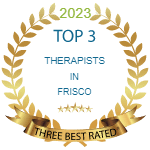Introduction:
It lurks beneath black cats and shattered mirrors, a superstitious chill down the spine. Friday the 13th, that notorious date, casts a long shadow for some, evoking anxieties deeper than spilled salt or broken ladders. This, my friends, is Triskaidekaphobia, the fear of the number 13, and it grips millions with a cold, irrational hand.
Affecting around 9-10% of the population, Triskaidekaphobia isn’t just a harmless quirk. Studies by researchers like Peter J. Watson suggest it can significantly impact daily life, influencing travel choices, avoiding certain dates, and even causing panic attacks. But where does this fear stem from? And, more importantly, can we shed light on its darkness?
Origins:
The roots of Triskaidekaphobia stretch back through centuries, intertwining with cultural and religious beliefs. In Norse mythology, Loki, the trickster god, was the 13th guest at a festive gathering, dooming it to tragedy. Similarly, Judeo-Christian traditions associate 13 with Judas, the betrayer, at the Last Supper. These historical whispers fuel the superstitious fire, feeding the fear of misfortune tied to the unlucky number.
Examples in Modern Culture:
Even in our supposedly enlightened age, the echo of 13’s ill-omen persists. Buildings often skip the 13th floor, hotels omit room 13, and airlines sometimes avoid flight numbers bearing the dreaded digits. This widespread avoidance, driven by collective anxieties, reinforces the perception of 13 as a symbol of bad luck, perpetuating the phobia’s hold on some minds.
Treatment and Coping:
For those grappling with triskaidekaphobia, the condition can be debilitating, but there are treatments and coping mechanisms available. Cognitive-behavioral therapy (CBT) is often recommended to help individuals challenge and change their thought patterns. Exposure therapy, a form of CBT, gradually introduces the feared object—in this case, the number thirteen—to reduce anxiety over time. Additionally, relaxation techniques such as deep breathing and mindfulness can help manage symptoms when they arise.
Lastly Kazmo Brain Center recognizes the impact that such fears can have on an individual’s life. Offering a range of therapeutic interventions, the center provides a supportive environment where individuals can work to understand and overcome their phobia.
Conclusion:
So, the next time Friday the 13th looms, remember: fear thrives in the shadows. By shedding light on Triskaidekaphobia’s origins, cultural echoes, and effective treatment options, we can empower ourselves and others to step out of the darkness and reclaim control from the superstitious grip of an unlucky number. But wait, what if challenging our superstitious anxieties simply paves the way for a bolder encounter with fate, one where we rewrite the narrative of 13, transforming it from a harbinger of misfortune to a symbol of resilience and triumph? What do you think?





